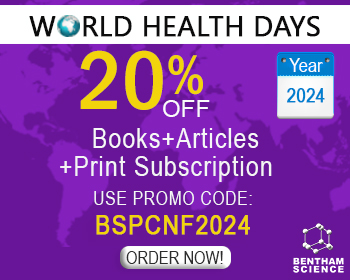Abstract
Background: New 6-hydroxy-5-(p-hydroxybenzylidene)-3-phenyl-2- [(5-pchlorophenyl)- 1,3-thiazol-2-yl]-1, 2, 4-triazine derivatives containing a thiazole ring were synthesised as potential antitumor agents.
Methods: Cytotoxicity of compounds (3) and (4) was evaluated in human hepatocellular carcinoma (HCC) cell lines (HepG2); compound (3) showed more cytotoxicity (IC50=9.0μg/ml) than compound (4) (IC50=18.40μg/ml) using doxorubicin as standard. The degree of toxicity of compound (3) was assessed by the LD50 with its anticancer performance by suppressing tumor angiogenesis against diethylnitrosamine (DENA) induced hepatocellular carcinoma (HCC) in male rat model.
Results: Carcinogenic rats showed a significant increase in markers of angiogenesis, tumour growth, and liver function tests and malondialdehyde level coupled with reduced hepatic glutathione level and caspase-3 activity. The distribution of compound (3) to animals after the development of HCC improved biochemical alterations from a DENA chemical carcinogen that is confirmed by hepatic histopathology.
Conclusion: Compound 3 perhaps utilized as a strong applicant for newly therapeutic protocols against hepatocarcinogenesis by controlling tumor angiogenesis and renovating the activity of hepatic marker enzymes in addition to reversing the oxidant-antioxidant imbalance in corporation with amelioration of histopathology. While the trial supports the use of compound 3 for improved HCC outcome and the toxicity and side effects should be considered.
Keywords: HCC, apoptosis, alfa fetoprotein, 1, 2, 4-triazine, vascular endothelial growth factor receptor-2 tyrosine kinase (VEGFR-2), pharmacology.
[http://dx.doi.org/10.24203/ajas.v7i2.5745]
[http://dx.doi.org/10.1053/j.gastro.2007.04.061] [PMID: 17570226]
[http://dx.doi.org/10.1111/hepr.12310] [PMID: 24533487]
[http://dx.doi.org/10.1053/j.gastro.2011.12.061] [PMID: 22537432]
[http://dx.doi.org/10.1038/nrc1934] [PMID: 16929323]
[http://dx.doi.org/10.1136/gut.2004.052167] [PMID: 15753540]
[http://dx.doi.org/10.1134/S1070363217100218]
[http://dx.doi.org/10.1016/j.bmc.2004.06.033]
[http://dx.doi.org/10.1080/14756360802519558] [PMID: 19469712]
[http://dx.doi.org/10.3987/COM-12-12625]
[http://dx.doi.org/10.1007/s00706-014-1303-9]
[PMID: 32141420]
[http://dx.doi.org/10.1016/j.ejmech.2006.12.006] [PMID: 17303290]
[http://dx.doi.org/10.1016/j.ejmech.2008.09.032] [PMID: 19000643]
[http://dx.doi.org/10.1016/j.ejmech.2009.02.023] [PMID: 19299038]
[http://dx.doi.org/10.1016/j.tetasy.2005.11.004]
[http://dx.doi.org/10.1002/jbt.22404] [PMID: 31593341]
[http://dx.doi.org/10.2174/0929867043365323] [PMID: 15134513]
[http://dx.doi.org/10.1111/j.1365-2613.2009.00656.x] [PMID: 19659896]
[http://dx.doi.org/10.1016/j.cbi.2007.06.032] [PMID: 17658503]
[http://dx.doi.org/10.1016/S0300-483X(01)00473-5] [PMID: 11718950]
[http://dx.doi.org/10.1080/03639045.2016.1185435] [PMID: 27142812]
[http://dx.doi.org/10.1093/jnci/82.13.1107] [PMID: 2359136]
[http://dx.doi.org/10.1016/j.cbi.2017.07.008] [PMID: 28693887]
[http://dx.doi.org/10.1093/jnci/82.13.1113] [PMID: 2359137]
[http://dx.doi.org/10.2174/092986709788803312] [PMID: 19548866]
[http://dx.doi.org/10.1124/pr.56.2.6] [PMID: 15169927]
[http://dx.doi.org/10.1371/journal.pone.0056817] [PMID: 23457619]
[PMID: 8183243]
[http://dx.doi.org/10.1021/es60130a004]
[http://dx.doi.org/10.1371/journal.pone.0144517]
[http://dx.doi.org/10.1016/j.biopha.2017.01.108] [PMID: 28222397]
[http://dx.doi.org/10.1006/meth.2001.1262] [PMID: 11846609]
[http://dx.doi.org/10.1093/clinchem/15.2.124] [PMID: 5773262]
[http://dx.doi.org/10.1016/0026-265X(70)90045-7]
[http://dx.doi.org/10.1093/ajcp/28.1.56] [PMID: 13458125]
[http://dx.doi.org/10.1016/0002-9378(79)90708-7] [PMID: 484629]
[http://dx.doi.org/10.1021/jm201330u] [PMID: 22320343]
[http://dx.doi.org/10.1002/cjoc.19980160608]
[http://dx.doi.org/10.1038/nrd2115] [PMID: 17396134]
[http://dx.doi.org/10.1056/NEJMoa032691] [PMID: 15175435]
[http://dx.doi.org/10.1038/nrc3627] [PMID: 24263190]
[http://dx.doi.org/10.1021/bi981291f] [PMID: 9843450]
[http://dx.doi.org/10.2147/DDDT.S138320] [PMID: 28670112]
[http://dx.doi.org/10.1002/cbdv.201900232] [PMID: 31287621]
[http://dx.doi.org/10.1056/NEJMra044389] [PMID: 16014887]
[http://dx.doi.org/10.3923/ajb.2011.74.81]
[http://dx.doi.org/10.1371/journal.pone.0087011] [PMID: 24498011]
[http://dx.doi.org/10.3892/or.2014.3285] [PMID: 24969048]
[http://dx.doi.org/10.26873/SVR-610-2019]
[http://dx.doi.org/10.1016/j.jep.2016.04.050] [PMID: 27130644]
[http://dx.doi.org/10.1021/jm0305523] [PMID: 15115390]
[http://dx.doi.org/10.1016/S1097-2765(02)00482-3]
[http://dx.doi.org/10.1016/j.ejmech.2018.07.003] [PMID: 30025350]
[http://dx.doi.org/10.3892/ol.2015.3313] [PMID: 26622559]
[http://dx.doi.org/10.7324/JAPS.2016.60723]
[http://dx.doi.org/10.1002/hep.1840110404] [PMID: 1970323]
[http://dx.doi.org/10.1038/367429a0] [PMID: 8107801]
[http://dx.doi.org/10.1016/j.jep.2004.03.046] [PMID: 15234763]
[http://dx.doi.org/10.1016/j.archoralbio.2003.07.002] [PMID: 14693198]
[http://dx.doi.org/10.1155/2014/194652] [PMID: 25580452]
[http://dx.doi.org/10.1016/S0168-8278(01)00142-8] [PMID: 11580156]
[http://dx.doi.org/10.20959/wjpps20179-9926]



























